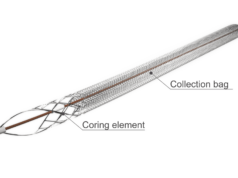 In a recent nationwide study of observational data from the USA, intracranial haemorrhage (ICH) was found to be rare among deep vein thrombosis (DVT) patients treated with catheter-directed thrombolysis (CDT). The study showed that the incidence of ICH has been decreasing over the nine years of the study period. The most important independent predictor of developing ICH was history of stroke.
In a recent nationwide study of observational data from the USA, intracranial haemorrhage (ICH) was found to be rare among deep vein thrombosis (DVT) patients treated with catheter-directed thrombolysis (CDT). The study showed that the incidence of ICH has been decreasing over the nine years of the study period. The most important independent predictor of developing ICH was history of stroke.
“Although acute ICH is a rare complication of CDT, it remains a major concern associated with use of this therapy,” write Vladimir Lakhter and colleagues in the Journal of Vascular Surgery: Venous and Lymphatic Disorders.
The authors used the National Inpatient Sample (NIS) database to identify all patients with proximal lower extremity or caval DVT between January 2005 and December 2013 in the USA. They then performed logistic regression to identify the clinical predictors of ICH among DVT patients treated with anticoagulation alone and those treated with CDT.
Lakhter and colleagues report that mong 138,049 patients with proximal lower extremity or caval DVT, 7,119 (5.2%) of patients were treated with anticoagulation therapy and CDT. They write that for patients treated with anticoagulation alone, ICH occurred in 0.2%, compared to 0.7% for those undergoing CDT (p<0.01).
In addition, the investigators found that independent predictors of ICH in the CDT cohort were history of stroke (OR 19.4 [95% CI 8.8–42.8], p<0.01), chronic kidney disease (OR 2.2 [95% CI 1.1–4.7], p=0.03), age >74 years (OR 2.2 [95% CI 1.2–4.3], p=0.02), male sex (OR 1.8 [95% CI 1.01–3.3], p=0.048). Of those patients treated with anticoagulation alone, risk factors for the development of ICH were history of stroke, hospital teaching status, and age >74 years.












